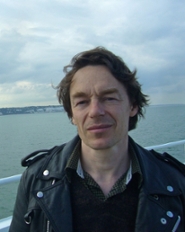
Berlin-based artist Caro Suerkemper (1964) shows no mercy. She undermines the fundamental contradiction between the position of the absolute and the dialectics of the relative and prompts us to replace a historically sufficiently legitimised, supremely untroubled self-confidence with a reflex action of self-mockery. However, what is apparent in the foreground of her work – obvious situations of bondage, women relieving themselves, constricting clothes, laced breasts, exposed buttocks, but also snub-nosed kids who make you smile – in short, appearances, the entire sphere of the empirical inner and outer world – is just a means and a form of pathos, leading us to the underlying realities. Subtly and efficiently in work of outstanding quality, using brush, crayon, and her fingers, Suerkemper manages not merely to question but also to unmask what not just the church and society have been attempting for centuries: to curb women’s tongues – mulierem ornat silentium (silence becomes a woman). She wants to take us down to the depths, down to the tectonic plates where social, normative, moral and aesthetic earthquakes interconnect in a complicated way. Kant’s idea that what is important in reception (or “aesthetic judgement”) is what we make of given ideas is preluded by Suerkemper to the extent that, although she makes the impression created by what is desirable or beautiful dependent on certain conditions, these in themselves are not the truth but merely a precondition. Suerkemper likes to point out that her work also contains some baroque elements. In fact, not only her drawings, china figures, underglaze painting and marble sculptures, but also the titles of her works (Anmut (Grace), Würde (Dignity), Gnade (Mercy), Carokoko, etc.) are extraordinary and for this reason alone baroque – though also ambiguous. Whereas we are gripped by the extraordinary in the art of Ancient Greece and Rome, it repels us in baroque art: we find it disturbing, an annoying ambiguity, e.g. a praying figure, bent over in convulsions, a woman of “baroque” proportions urinating in a wheelchair. Why these gestures, we ask ourselves. Why indeed? Have mercy on us, the recipients.
www.ftn-books.com has the Wasserfarben book published by CARO now available.














































































